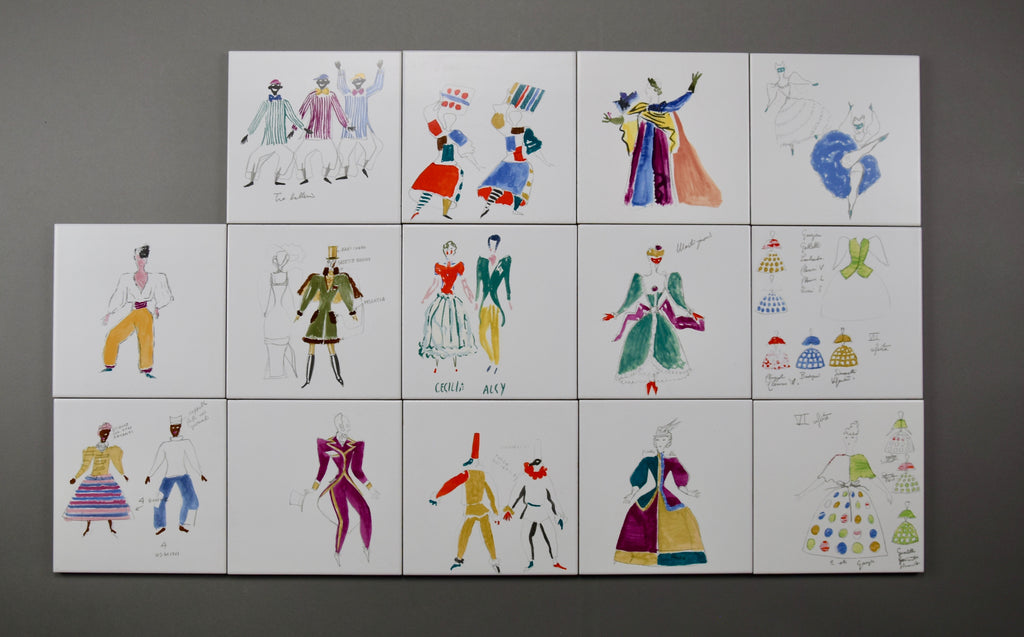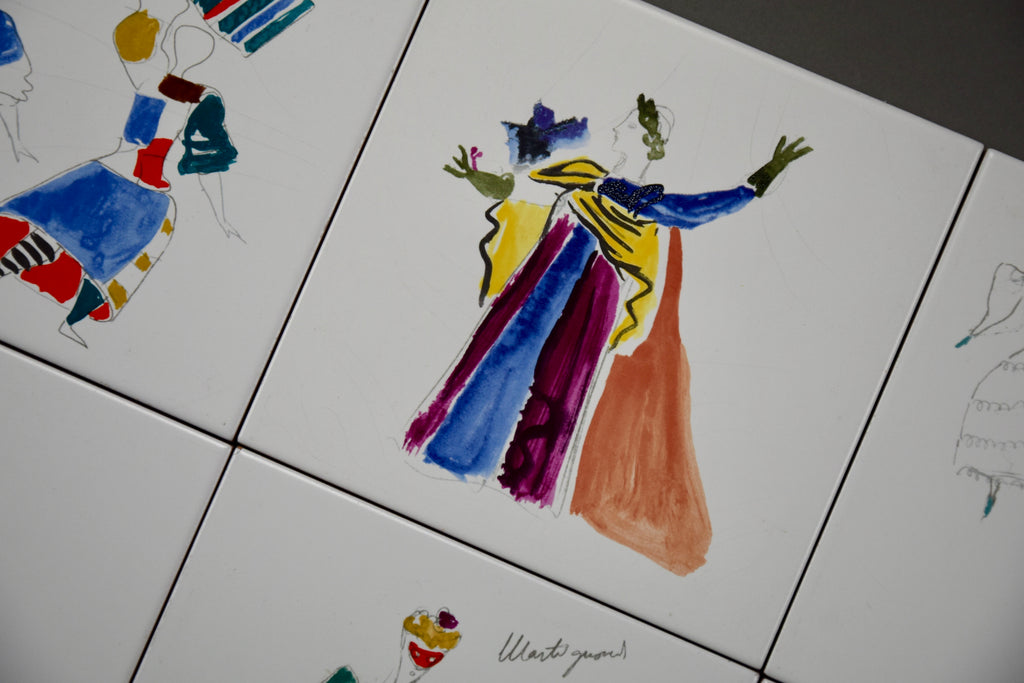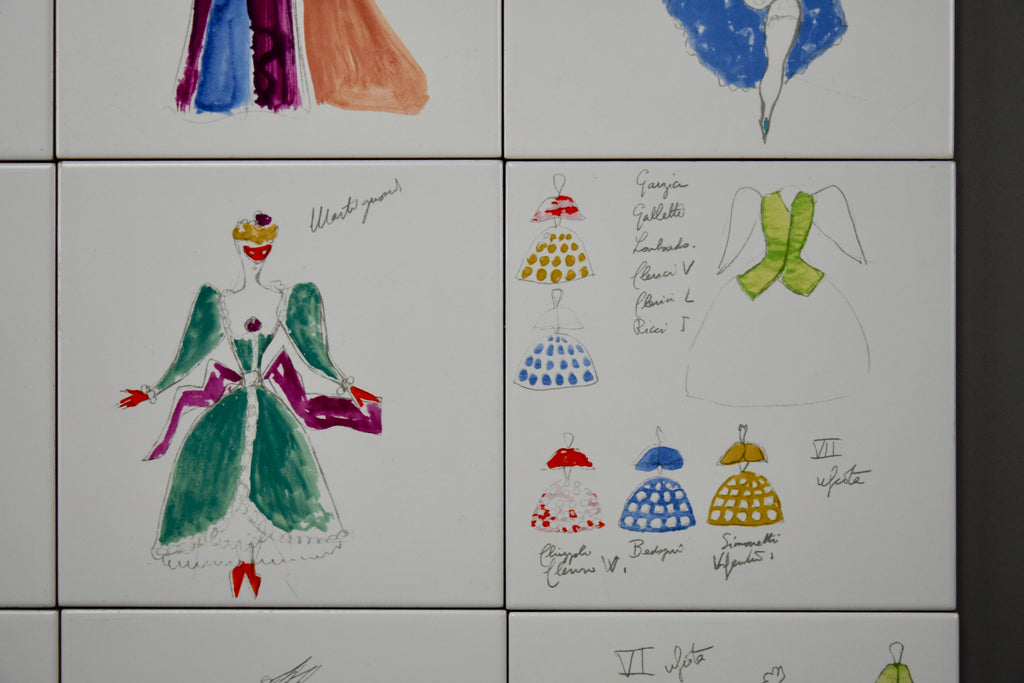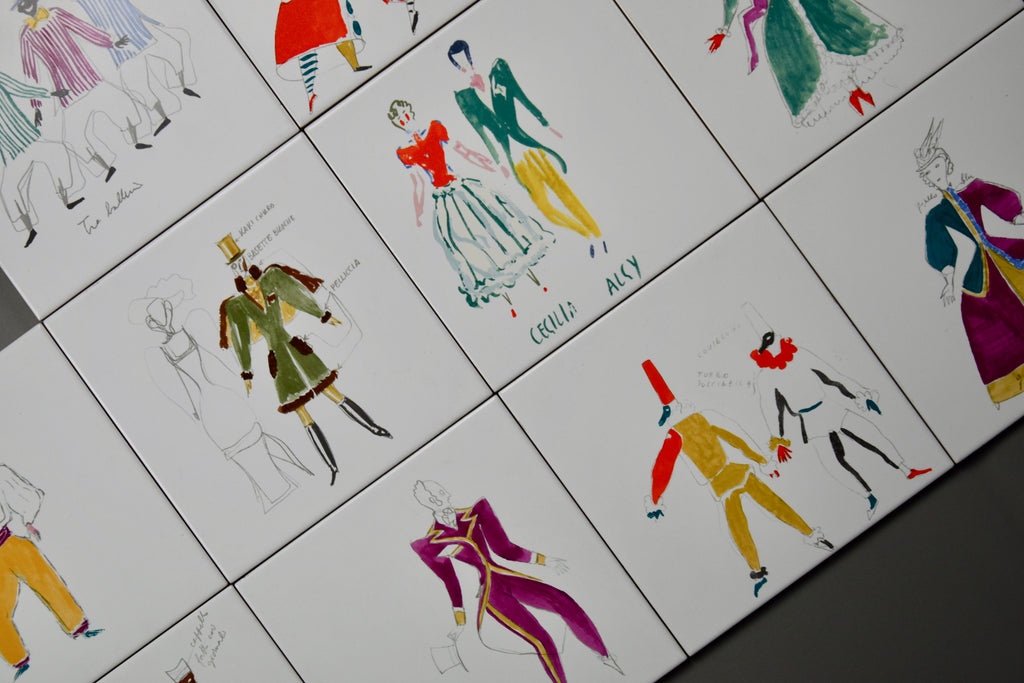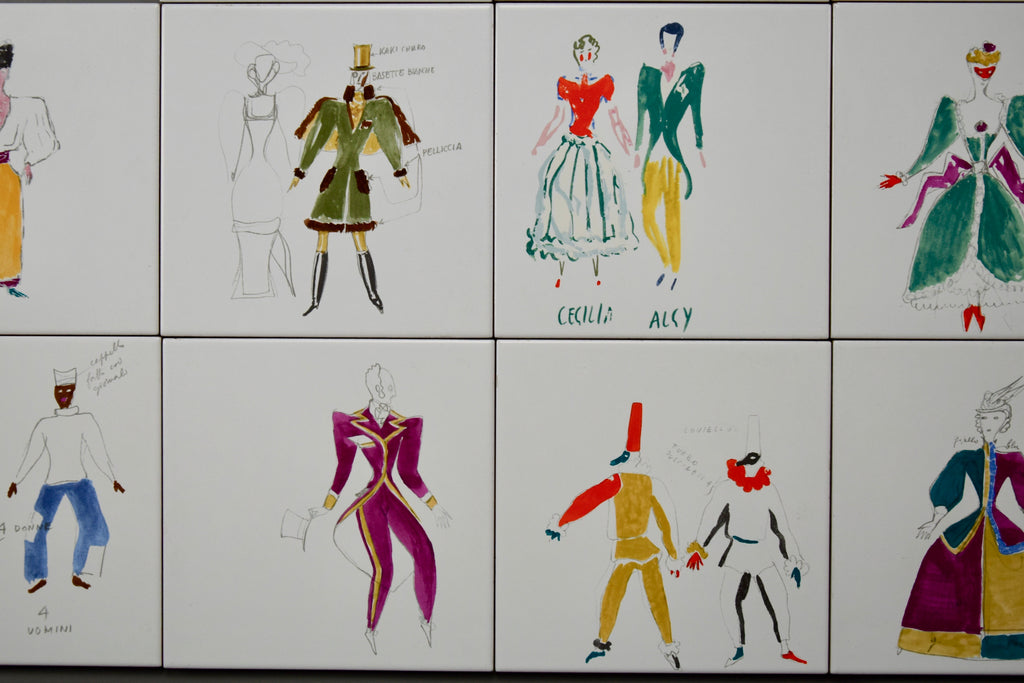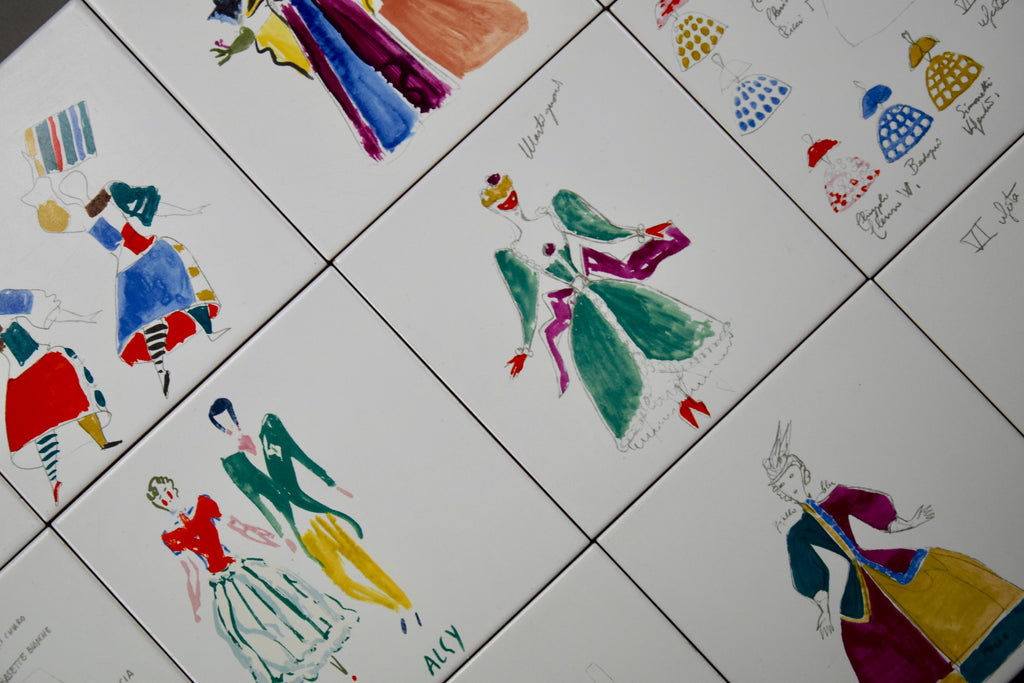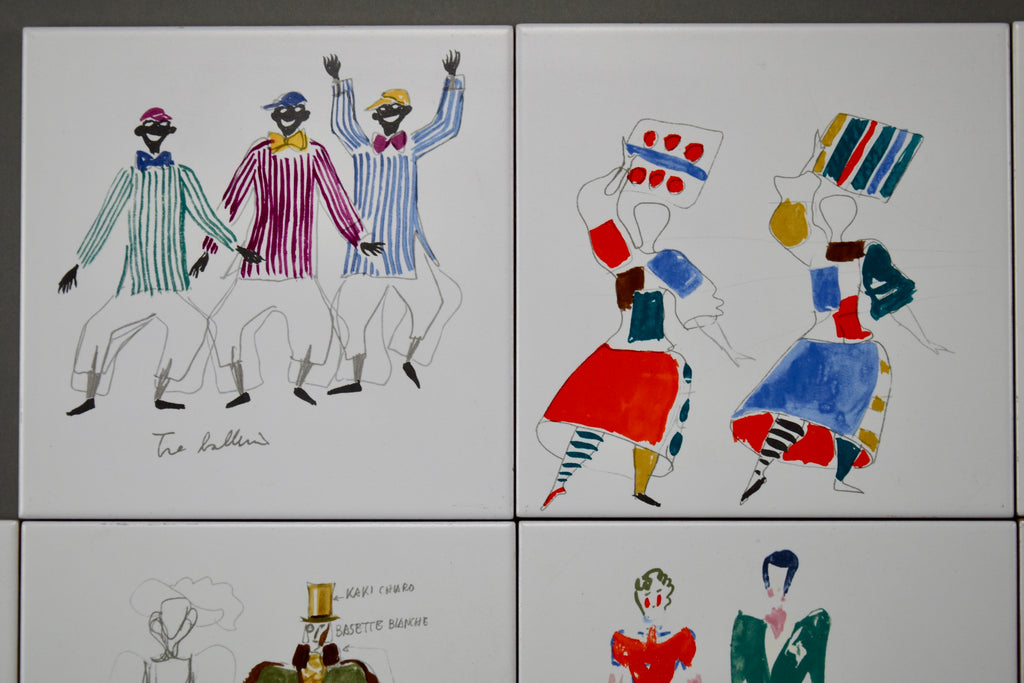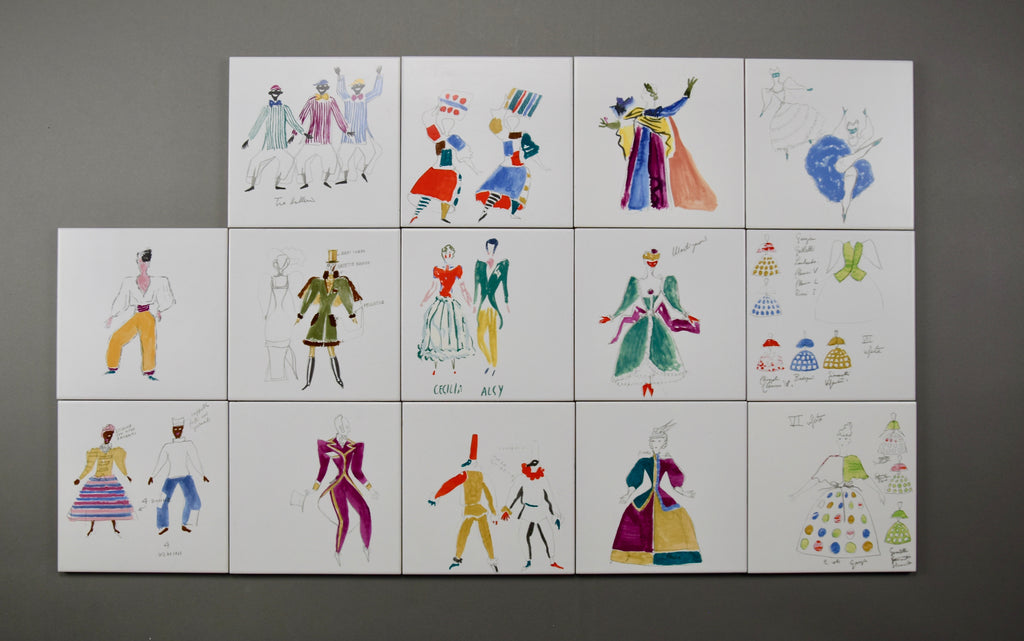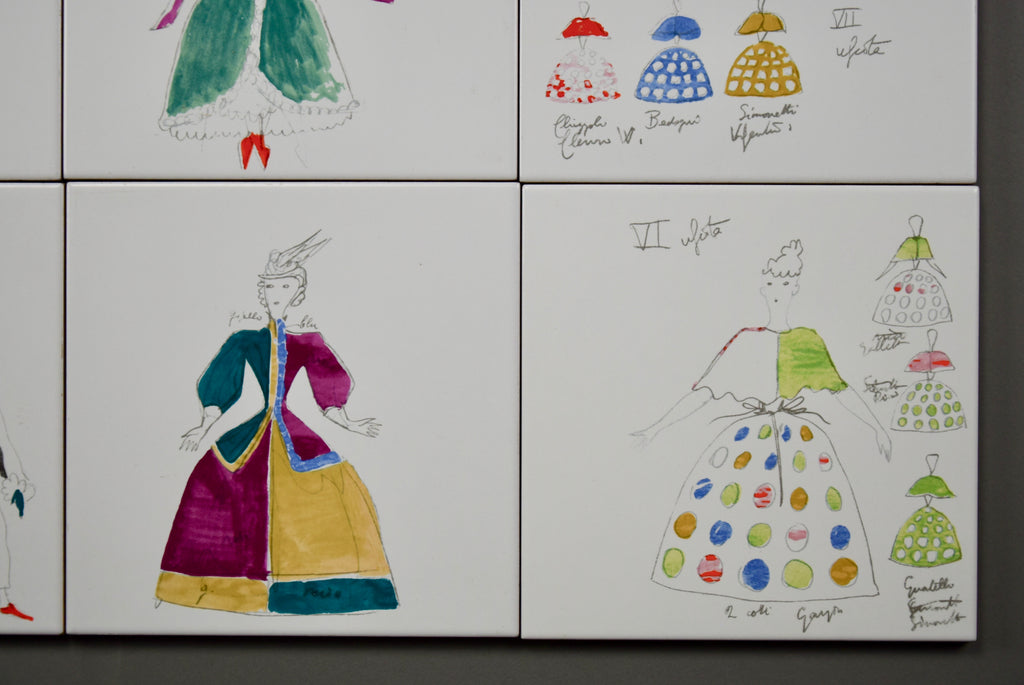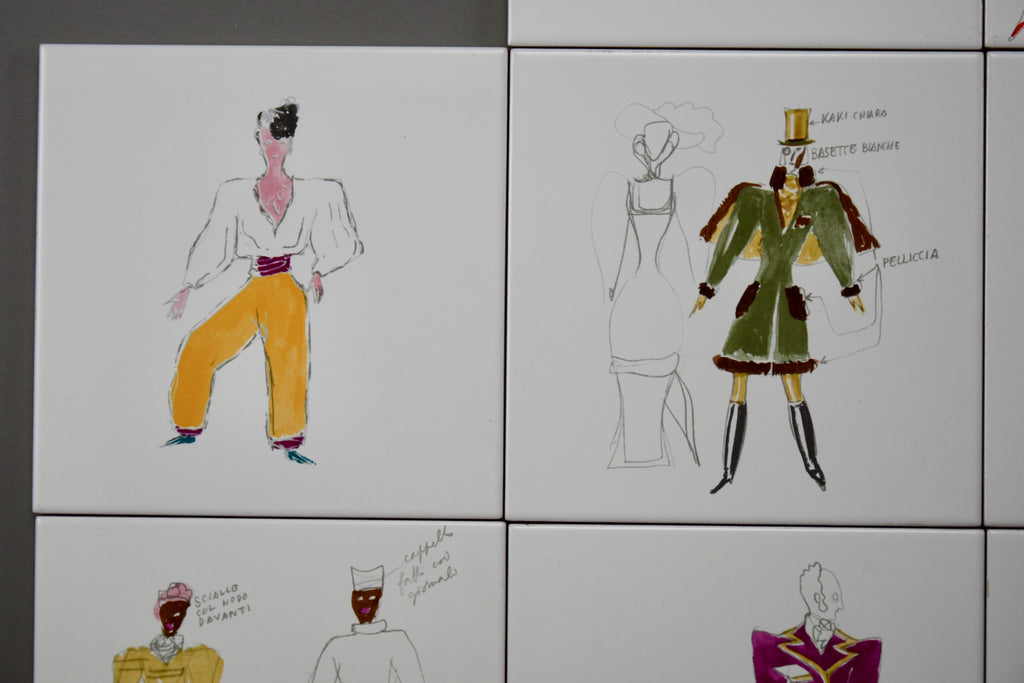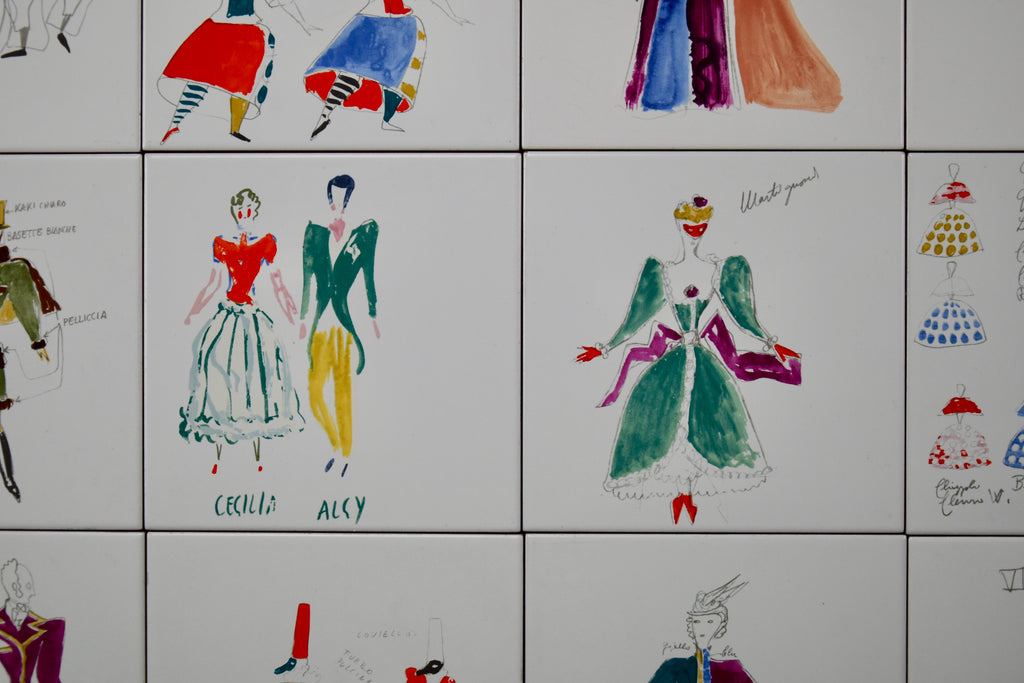Giò Ponti Costumi
Giò PontiDiscover a piece of design history with this rare and exquisite set of ceramic tiles titled Costumi. Designed by the legendary Gio Ponti and produced by Bardelli Ceramica in the 1980s, this collection captures the artistic essence and innovation of one of the most influential designers of the 20th century.
Each tile in this set is a vibrant illustration of theatrical costumes, showcasing Ponti’s masterful use of color and whimsical artistry. The Costumiseries is not just a decorative element but a testament to Ponti’s creative genius, making it perfect for collectors, interior designers, or art enthusiasts looking to own a piece of Italian design heritage.
With their hand-painted charm and unique historical significance, these tiles can elevate any space—whether as a stunning wall installation or a sophisticated centerpiece. Rarely available on the market, this collection is a true treasure for connoisseurs of fine design.
Gio Ponti (1891–1979) was an iconic Italian architect, industrial designer, and artist whose influence spanned over six decades. Known for his innovative approach, Ponti transformed modern design, blending functionality with art. He founded the influential design magazine Domus in 1928, which became a cornerstone of modern architectural and design discourse.
Ponti’s portfolio is remarkably diverse, including skyscrapers, such as Milan’s iconic Pirelli Tower, as well as furniture, ceramics, and glassware. His collaborations with leading manufacturers, including Richard Ginori and Venini, elevated Italian craftsmanship to an international level. The Costumi tiles reflect Ponti’s fascination with theatrical and expressive forms, adding yet another layer to his vast legacy.
Bardelli Ceramica, renowned for its high-quality artisanal ceramic production, collaborated with Ponti to bring his designs to life in the 1980s. This partnership resulted in the Costumi series, showcasing Ponti’s playful yet sophisticated aesthetic, which continues to resonate with design enthusiasts worldwide.
Seize this rare opportunity to own a piece of Gio Ponti’s artistic legacy—an investment in timeless beauty and historical significance.
The tiles will be shipped insured in a custom made wooden case. Cost of transport to the US, Euro 225, is crate included.
For information please contact us through : tacojoustra@vintageobjects.com.
We ship worldwide.
Pick-up by appointment only.
We are a 1stDibs Platinum 5 Star Dealer.
These were Gio Ponti's two principal encounters with the theatre, taking place within the same decade and cantered on La Scala: I have worked at La Scala Scenes and costumes: but Ponti would have liked to be the director and not just dress the characters and dress the stage. He had felt this way ever since he had fallen in love with the Russian ballets of Diaghilev at first sight, and then with Apia's theatre. Gio Ponti's architecture was itself almost a theatre, a stage for the moving figures that appeared and disappeared from its staircases, balustrades, balconies, and perspectives. And the clothes that he loved to design,were already costumes. Like the ones for his theatre: costumes that looked as if they were cut out of paper, that one slipped into to make them dance: total costumes, in which the wearer disappeared; the hands vanished always gloved, and so did the hair always under a hat. Simplified costumes, made to be viewed from afar, with nothing material, and still less historical, about them. So were his scenes, which had to look like mere enlargements of rapid sketches. That is to say, they were intended to allude to scenes, not to be them. To simulate the theatre. This is why Ponti wrote on his sketches, do it badly. What he loved about theatrical costume makers was their extraordinary capacity for improvisation. What he feared, and detested, were attempts at theatrical realism. It could be said that his kind of performance was the ballet, and his kind of character was Harlequin, an acrobat of grace and detachment even if -see his theatre script II Coro- he sometimes lapsed into solemnity.
GIO PONTI was born in Milan on November 18th, 1891. He graduated in architecture to the Polytechnic of his town in 1921. He carried out his activity for six decades - from 1920 up to 1970 - not only in architecture, but also in the fields of painting, design, teaching, and journalism. Planning and promoting quality, by means of exhibitions and magazines, were the univocal objectives for him, and for his meaning for future. Of the years twenty are his first architecture “neoclassic” works, the house of Randaccio street in Milan, the Bouilhel house in Garches, Paris. from 1923 up to 1930 he was the artistic manager of Richard Ginori, and he remade the entire production of the company. For Gio Ponti the ceramics was always his favorite explication, from the creation of the “animated bottles” for Ceramica d’Imola, to the various ceramic series often created in connection with architecture, such as the ceramic tiles “diamanti” of the Ceramica Joo, and also for the façades of the Pirelli skyscraper, or the Shui-Hing Stores in Hong Kong, or the Bijenkorf Stores in Eindoven Holland, or the INA palace in S. Paolo street Milan. In 1928 he established Domus magazine, that will be managed for fourty years. In 1941 he established the magazine Stile. Gio Ponti architecture, well known all over the world can be discussed in an emblematic way; if the Pirelli tower is the architectural symbol of 1950, the cathedral of Taranto and the museum of Denver in Colorado are the new symbols of 1970. In the design field, the Pavoni coffee-machine pointed out the creative reneval of design in 1950, such as also the super-light chair of Cassina. The “colored floors” for “Salzburger Nachrichten” in Salisburgo are the Gio Ponti contribution to the of the years ’70. Gio Ponti died in Milan on September 16th, 1979, he was 88 years old.
